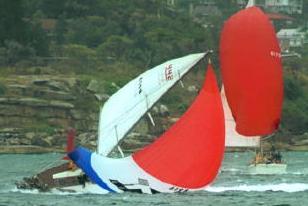Every other newspaper story in 2010 seems to include a reference to how this next generation of Americans will have it worse than their parents for the first time in well, ever. I have been there among the alarmists trying to get people to worry more about the balance of trade, the state of our educational system, corruption in Washington, and others issues. Change does not come easily to humans and we all know that the bigger the problem, the more likely we are to change our behavior. This creates bad news inflation to inspire change. We hear it all day every day from just about every interest group.
I have to wonder: Does it work? Do people really change their behavior from fear of bad things happening? There is some evidence that people do. There are many waterways in the US that have recovered from terrible pollution, we all recycle, and after suffering heart attacks - eating and exercise habits change. It could be said credibly then, that people's behaviors can evolve.
Alternatively, people often do new things. Electricity, railroads, the Panama canal, the car, the plane, the space race, the computer, the Internet, and the cellular phone came to us as new things. New things that humans adopted vigorously. These were revolutionary new things.
When talking with founders of start up companies or the people that finance them, the common belief is that new things get adopted if they are ten times better or ten times cheaper than the thing being displaced. The new thing gets adopted, the old thing dies, Schumpeter is proven right, and change happens. Revolution brings about much more change than evolution.
Could 2011 be the year where some of this revolution happens and we regain the hope that our kids will be better off than we are? Here are a few areas to watch:
- Innovation Engine: Innovation happens because the innovators have confidence that they will preserve the value of what they create. Many companies are built round the patent and copyright systems, but many more have captured the value of their innovation without those constructs. Neither Google or Facebook are protected by patents or copyrights. This structural IP protection scheme will fuel an explosion of innovation -- limited only by the ability of people to think freely.
- Leap Frog: The idea that an emerging nation can leap frog the developed nations by rapid deployment of new technologies is a myth. A village with no telephone landlines and just cell phones has acquired communications capabilities much faster than anyone had dreamed, but can anyone really argue that they have leap frogged over and ahead of a town that has had landlines for 100 years and has cell phones too? This phenomenon will create markets for products from the developed nations. The first will be healthcare, the second will be education, and right after that -- anything that conveys status.
- Work Redefined: Soon we will be re-allocating all of the time we used to spend as computer operators to other productive activities. This could represent a dramatic change in productivity. Here is a post on the subject from November 30.
I hope that 2011 is the year that the revolution takes hold. I hold out less hope for the evolution part. Either way it will be quite interesting to watch these things play out.
